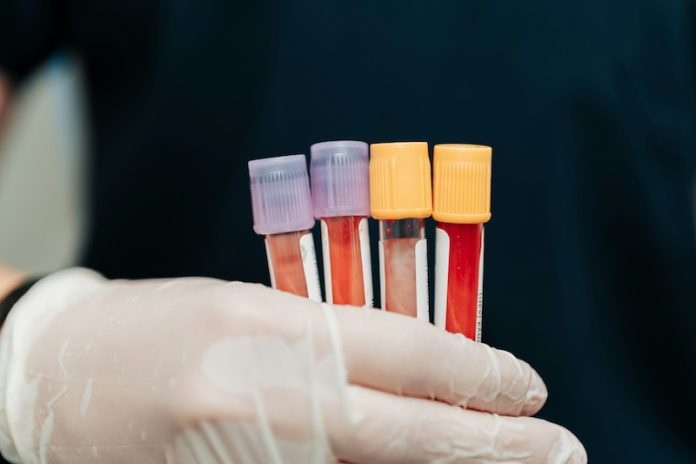
A new study suggests that a simple blood test could help emergency responders quickly determine whether a stroke is caused by a brain bleed or a blood clot, even before a patient reaches the hospital. The findings were presented at the American Stroke Association’s International Stroke Conference 2025.
Why Speed Matters in Stroke Treatment
When someone has a stroke, every minute counts. The longer a stroke goes untreated, the more brain cells die, leading to more severe damage. However, before treatment can begin, doctors must determine the type of stroke a person is having—either:
- Ischemic stroke – Caused by a blood clot blocking a vessel in the brain. Treated with clot-busting drugs or procedures to remove the clot.
- Hemorrhagic stroke – Caused by bleeding in the brain. Treated by lowering blood pressure and stopping blood thinners if the patient is taking them.
Currently, brain scans are needed to confirm stroke type, but these tests take time. Patients must be stabilized, transported to the hospital, and sent for imaging—all while brain cells are being lost.
Lead researcher Dr. Love-Preet Kalra from RKH Hospital Klinikum Ludwigsburg, Germany, explained, “It is crucial to quickly identify stroke type because they require completely opposite treatments.”
How the Blood Test Works
Researchers investigated whether a blood protein called glial fibrillary acidic protein (GFAP) could help diagnose stroke type quickly. GFAP is released into the blood when brain cells are damaged. It is already used in assessing traumatic brain injuries, but this study tested its ability to differentiate between stroke types.
The study included 353 stroke patients (average age 75, 47% women) who arrived at the emergency room within six hours of their first symptoms. Blood samples were taken by paramedics before the patients reached the hospital.
Key Findings
The study showed that GFAP levels could accurately identify whether a stroke was caused by bleeding or a clot:
- GFAP levels were nearly 7 times higher in hemorrhagic stroke patients (208 pg/mL) compared to ischemic stroke patients (30 pg/mL).
- GFAP levels were more than 4 times higher in hemorrhagic stroke patients compared to patients with conditions that mimicked stroke, such as migraines or seizures (48 pg/mL).
- GFAP levels below 30 pg/mL effectively ruled out a hemorrhagic stroke, meaning a clot was the likely cause.
- Using an age-based cutoff, the test was 90%–95% accurate in identifying hemorrhagic strokes.
Implications for Emergency Stroke Care
These findings suggest that measuring GFAP levels in an ambulance could help doctors make faster, life-saving treatment decisions. If confirmed in larger studies, this could change how stroke patients are treated:
- Patients with a brain bleed could receive blood pressure-lowering treatment earlier, potentially improving outcomes.
- Patients with clot-caused strokes could receive clot-busting drugs or interventions sooner, preventing further brain damage.
- In the future, blood thinners or clot-removal treatments could be started before hospital arrival, if testing becomes widely available.
Dr. Kalra noted that he was particularly surprised by the extremely high GFAP levels in patients who were taking blood thinners before experiencing a brain bleed. This suggests that this test could be especially useful for quickly identifying stroke type in patients on anticoagulant medications.
Challenges and Limitations
While promising, there are some challenges to implementing GFAP testing in emergency settings:
- A centrifugation step is required, meaning the blood sample must be processed before results can be obtained.
- GFAP levels increase with age, which could make it harder to detect small brain bleeds in older patients.
- Currently, most ambulances do not have access to blood testing equipment, so new systems would need to be developed to make this test widely available.
Expert Opinions and Future Research
Dr. Louise D. McCullough, a stroke expert from McGovern Medical School in Houston, who was not involved in the study, said, “This study suggests that GFAP could be a valuable tool for quickly assessing brain injuries in prehospital settings.”
However, she noted that for this test to become widely used, portable blood testing devices would need to be available in ambulances. Future studies should also explore whether GFAP can predict stroke outcomes and long-term recovery.
Conclusion
This study provides strong evidence that a simple blood test measuring GFAP levels could help emergency responders quickly and accurately diagnose stroke type.
If further research confirms these results, this test could become a game-changer, allowing for faster treatment, better outcomes, and potentially saving thousands of lives each year.
If you care about stroke, please read studies about how to eat to prevent stroke, and diets high in flavonoids could help reduce stroke risk.
For more information about health, please see recent studies about how Mediterranean diet could protect your brain health, and wild blueberries can benefit your heart and brain.
Copyright © 2025 Knowridge Science Report. All rights reserved.



